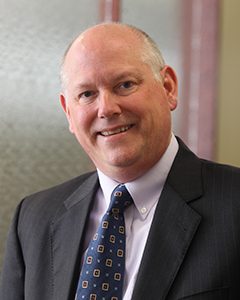The Uncertain Future of the PBGC

The ongoing uncertainty about how the federal government will give a helping hand to current and future retirees is growing even more uncertain, thanks to the situation at the Pension Benefit Guaranty Corporation (PBGC).
Sometimes likened to what the Federal Deposit Insurance Corporation (FDIC) does for bank deposits, the PBGC is essentially a federally-created safety net that provides limited coverage for private sector workers if their company’s pension fund fails. It was created by the Employee Retirement Income Security Act of 1974 (ERISA) to encourage the continuation and maintenance of voluntary private defined benefit pension plans; provide timely and uninterrupted payment of pension benefits; and keep pension insurance premiums at the lowest level necessary to carry out its operations.
Subject to other statutory limitations, PBGC’s insurance program pays pension benefits up to the maximum guaranteed benefit set by law to participants who retire at 65 ($64,432 a year as of 2017). Benefits payable to insured retirees who start their benefits at ages other than 65 or elect survivor coverage are adjusted to be equivalent in value.
PBGC is funded by insurance premiums paid by sponsors of defined benefit (DB) pension plans; assets held by the pension plans it takes over; recoveries of unfunded pension liabilities from plan sponsors’ bankruptcy estates; and investment income.
According to its fiscal 2015 report, PBGC pays monthly retirement benefits to about 826,000 retirees of 4,700 terminated DB pension plans. Including those who have not yet retired and participants in multiemployer plans receiving financial assistance, PBGC is responsible for the current and future pension benefits of about 1.5 million people.
Its single-employer program protects 30 million workers and retirees in 22,000 pension plans, while its multiemployer program protects 10 million workers and retirees in 1,400 pension plans.
The cost to workers has historically been low: The per-participant flat premium rate for plan years beginning in 2017 is $69 for single-employer plans (up from a 2016 rate of $64) and $28 for multiemployer plans (up from a 2016 rate of $27).
And, unfortunately, that has contributed to PBGC’s uncertain future.
In its FY 2016 Projections Report, the group described its multiemployer insurance program as “in serious trouble … likely to run out of money by the end of fiscal 2025.” The report says that unless there are changes in the law or additional resources are directed toward the program, its current deficit of $59 billion will continue to grow, and could be nearly $80 billion by fiscal year 2026.
“The increasing demand for financial assistance from insolvent plans will accelerate the depletion of PBGC’s Multiemployer Program assets,” according to the report. If it does become insolvent, “the people who rely on PBGC guarantees will receive only a very small percent of current guarantees — most participants would receive less than $2,000 a year and in many cases, much less.”
“Most of the risk of the program running out of money falls during the years 2024 to 2026,” the report said. “It is more likely than not that the Multiemployer Program will deplete its assets by the end of fiscal 2025. The risk of program insolvency grows rapidly after 2025, exceeding 99 percent by 2036.”
On the other hand, its single-employer program seems to be on the rebound. Currently facing a $21 billion deficit, the plan’s finances are improving and, according to the report, are “likely to improve over the next decade”; its current estimates project that the program will likely have a surplus by 2022. Nevertheless, the PBGC cautioned that “a wide range of outcomes remains possible, ranging from large deficits to surpluses.”
Further complicating matters is KOPPA, the Keep Our Pension Promises Act (S.1076/H.R.2412), introduced by Sen. Bernie Sanders (I-VT) and Rep. Marcy Kaptur (D-OH). Among other things, the bill would allow for the transfer of funds from PBGC’s single-employer program to the multiemployer program, and would impose a cumulative cap on tax-preferred retirement savings and retirement accumulations.
In addition to the obvious “borrowing from Peter to pay Paul” principle at play here – rarely a good idea in the long term — this legislation is particularly concerning to retirement service providers who pay higher single-employer PBGC premiums even though the PBGC affords no protection unless and until the relevant DB plan terminates as a whole.
It would seem to make more sense to simply combine the two programs into one; after all, the PBGC is one agency.
Whether or not KOPPA passes – presently it seems unlikely to move forward, given Congress’ and the President’s focus on other matters – it has at least helped to shine a light on PBGC’s problems.
Solving those problems, however, remains a serious challenge.
About the Author
